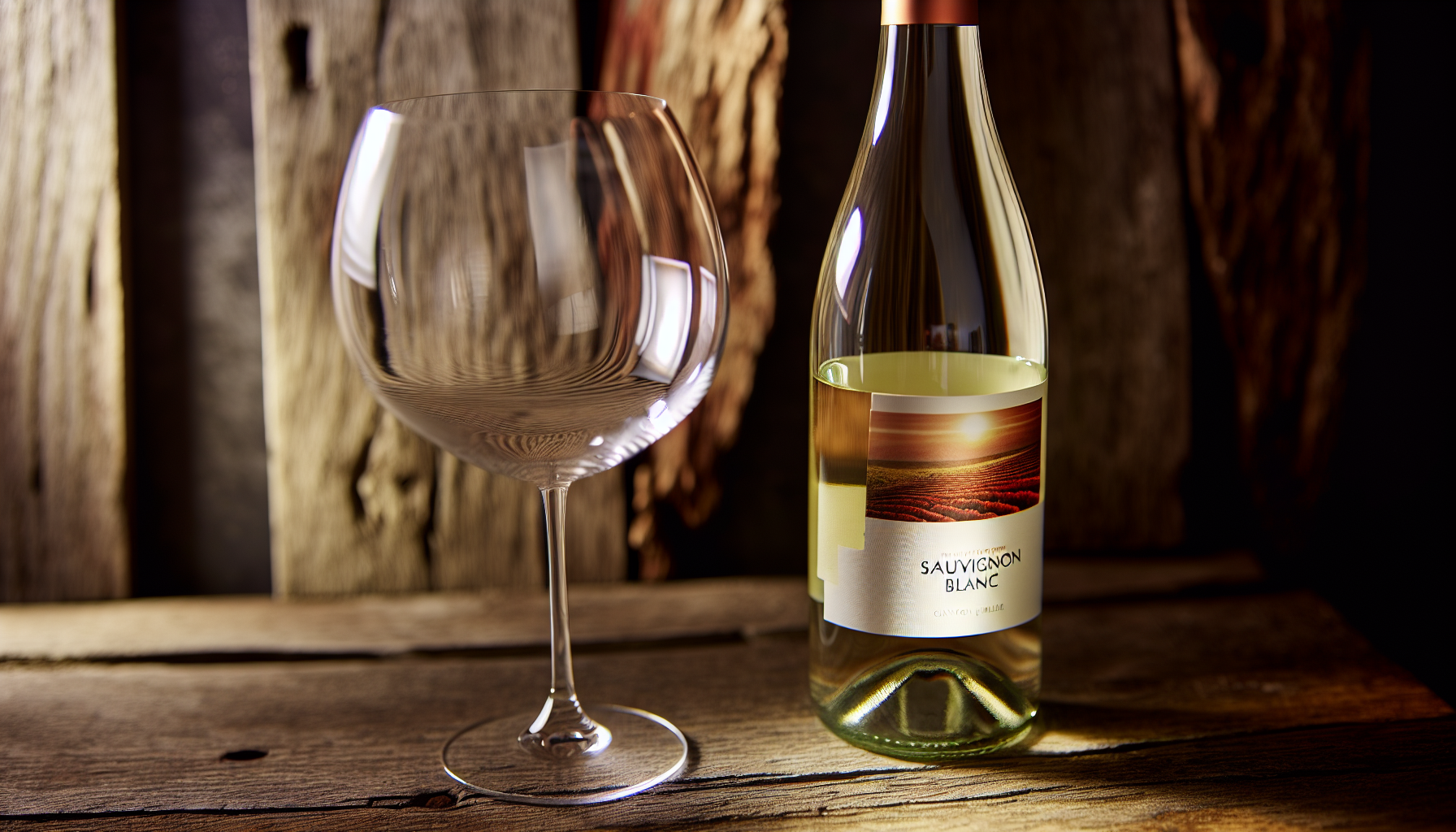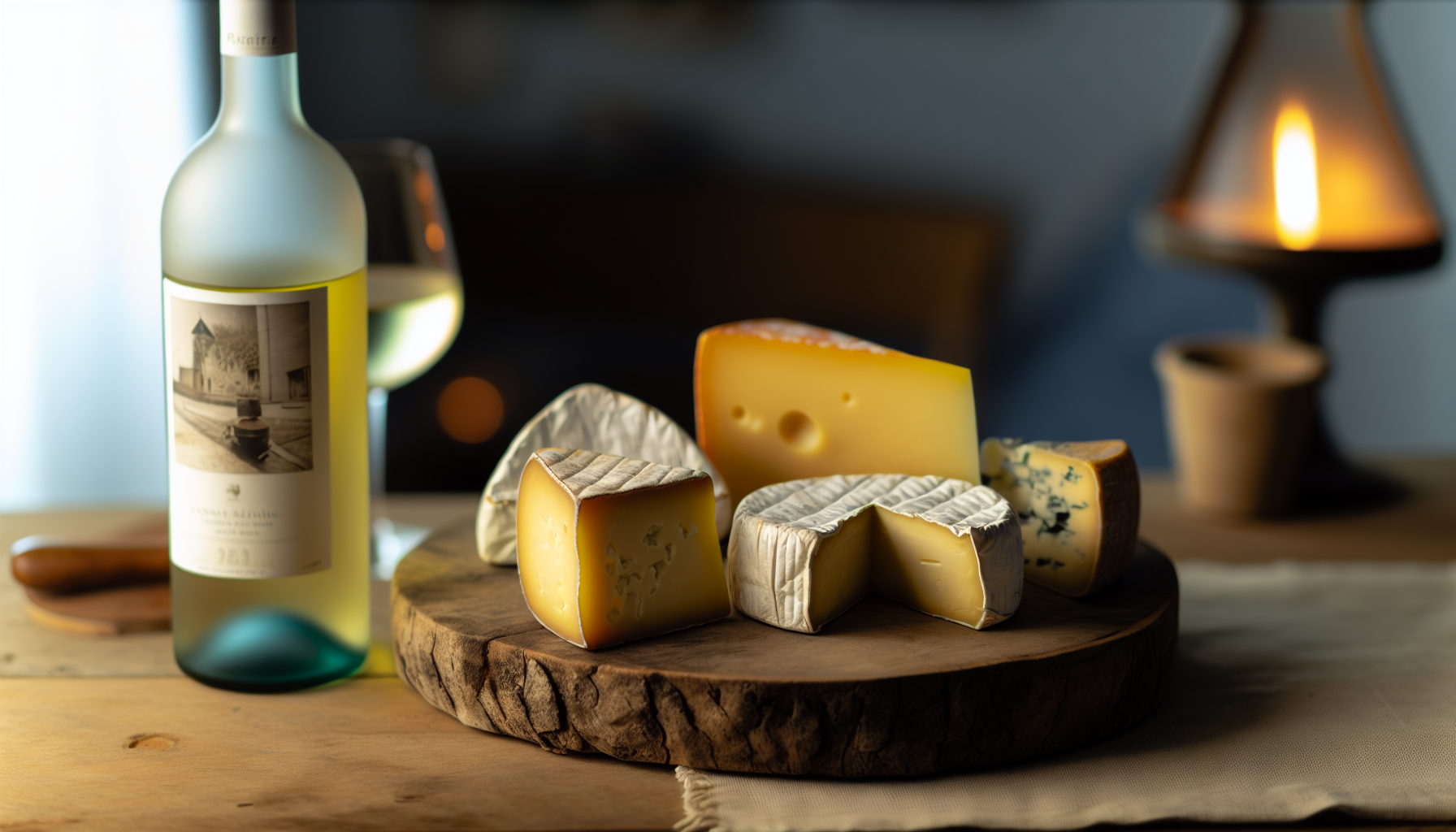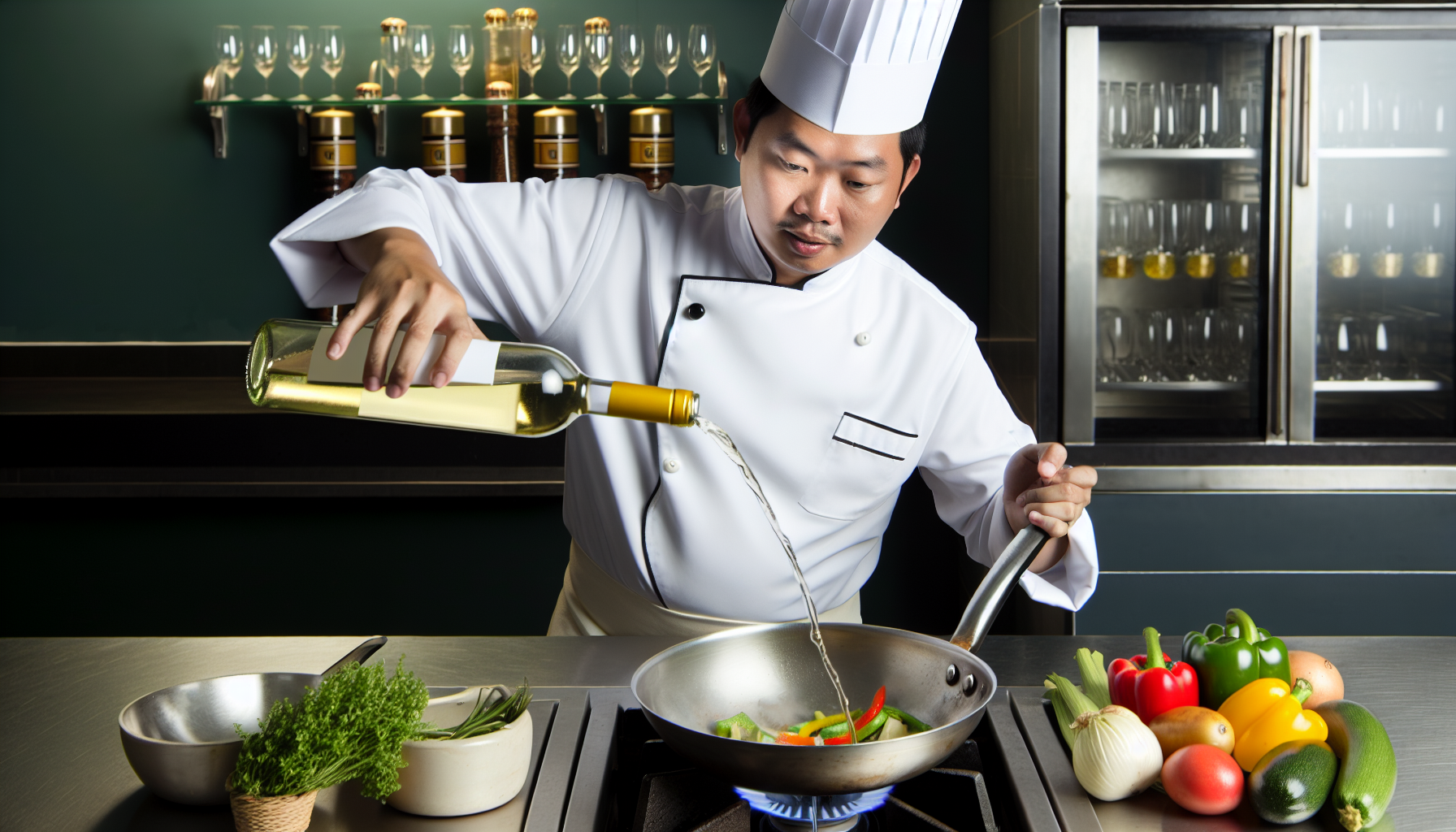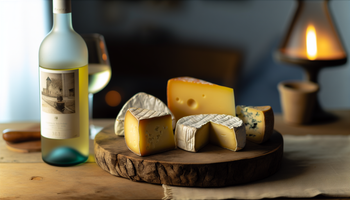Ultimate Guide to Mastering White Wine Food Pairing
6th Feb 2024
Pairing white wine with food can be as straightforward as choosing the right bottle to accompany your dish. Our guide breaks down white wine food pairing with practical advice on pairing wines like Chardonnay or Riesling with foods that will elevate your dining experience without the complexity. Get ready to enjoy harmonious pairings that work.
Key Takeaways
- White wine pairings enhance dining experiences by considering the wine’s weight, acidity, and sweetness to complement or contrast food flavors.
- Key varietals like Sauvignon Blanc and Chardonnay offer versatility in pairings, from herbaceous notes perfect for vegetables to richly oaked profiles suitable for creamy pastas and heavier meats.
- There are adventurous pairings beyond traditional expectations, allowing white wines like Gewürztraminer to complement spicy dishes or Viognier to go well with red meats, while always considering personal preferences.
Decoding the Art of White Wine Pairings

Pairing food with white wine is both a science and an art. It demands a balance of complex flavors, similar notes, or contrasting elements. Mastering this balance can take your dining experience to another level. White wines, with their unique profiles shaped by grape characteristics, winemaking techniques, and regional qualities, can interact with food flavors to create this harmonious pairing. So, how does one go about creating these pairing white wine experiences?
Your dining experience can be substantially improved, whether you are a beginner or a seasoned wine lover, by understanding the weight, acidity, and sweetness of white wines. Selecting a wine that complements or contrasts with your dish in these aspects can be the key to a successful pairing. For instance, a light-bodied wine with high acidity could offset the fattiness of a rich cheese platter, while a sweet white wine might balance out the heat of a spicy dish. But to fully appreciate this, we must first understand the anatomy of white wine.
The Anatomy of White Wine
At its core, white wine is a symphony of flavors and aromas that harmonize well with a variety of foods. With acidity playing a key role in these pairings, a high-acid white wine can provide a sharp, crisp taste that acts as a palate cleanser, cutting through rich flavors and enhancing the overall dining experience. Conversely, the body of the white wine, which can vary from light to full, has a critical influence on food pairing.
Assessed based on its alcohol and sugar content, the body of the wine can complement the weight of the food. For example:
- A light-bodied Pinot Grigio might pair well with a delicate seafood dish
- A full-bodied oaked Chardonnay could stand up to a rich, creamy pasta
- Sweet white wines, like Muscat and Riesling, achieve their desired level of sweetness by halting fermentation before all sugars convert into alcohol, making them ideal partners for spicy or sweet-and-sour dishes
All these factors contribute to the contrasting pairing principle, which involves countering the richness of one element with the contrasting characteristics of another.
Sauvignon Blanc: A Versatile Partner
Sauvignon Blanc is among the most adaptable companions in the realm of white wine pairings. With its herbaceous and vegetal notes, Sauvignon Blanc pairs exceptionally well with dishes like grilled asparagus and avocado, enhancing their flavors and providing a refreshing contrast. However, the versatility of Sauvignon Blanc doesn’t end here.
The crisp acidity of Sauvignon Blanc complements a variety of flavors, making it an excellent match for:
- Fresh goat cheese
- Spicy dishes, such as Indian curries and Szechuan-style tofu
- Seafood pasta dishes, like Linguine alle Vongole
- Scallops in a grapefruit-onion salad
Sauvignon Blanc’s refreshing qualities and high acidity enhance the flavors of these dishes.
Indeed, it’s a versatile partner, don’t you agree?
Chardonnay: From Creamy to Crisp
Another varietal that stands out in the white wine pairing world is Chardonnay. This versatile varietal, with styles ranging from creamy to crisp, can be a game-changer in your food pairing experience. Oaked Chardonnay typically presents rich and creamy textures along with citrus notes, while unoaked Chardonnay is recognized for its pure fruit flavors such as apples, pears, and citrus, sometimes accented with mineral tones.
Oaked Chardonnays, like many from California, Chile, or Australia, with their creamy notes, pair exceptionally well with hearty fish or seafood in rich sauces. On the other hand, the crispness of unoaked Chardonnay makes it suitable for light and bright appetizers, fresh ingredients, and complements the lightness of spring fruits and vegetables such as tomatoes, lemons, and white asparagus. The adaptability of Chardonnay to various winemaking techniques makes it a versatile choice for pairing with a wide spectrum of foods.
The Perfect Match: Food Types and Their White Wine Counterparts

Now that we have a profound understanding of the structure of white wines and their characteristics, let’s explore how to find their perfect match.
One of the primary considerations in any food and wine pairing is the weight of the dish. Light seafood, poultry, salads, and appetizers combine well with white wines, with specific varietals bringing out the best in different types of dishes. For example, light-bodied white wines are generally an excellent choice for:
- seafood
- chicken
- salad
- pasta
Wine and food pairings are an ideal match when the dishes have a degree of fattiness that can be offset by the wine’s profile.
White wines also pair wonderfully with another food type: cheese. Lighter white wines make good companions for cheeses like:
- Gouda
- Havarti
- Brie
- Goat cheese
Each pairing benefits from the complementary flavors and textures. But, how exactly do you pair these wines with seafood and poultry? Let’s delve into that next.
Seafood Sensations and White Wines
Seafood and white wine make a timeless classic pairing, perfectly complementing each other. The light, crisp flavors of white wine enhance the delicate taste of seafood. The subtleties of seafood, enhanced by the crispness, vibrant acidity, or richness of white wines, can transform a simple seafood dish into a culinary delight. For instance, unoaked Chardonnay is particularly suited to pairing with shellfish like oysters, clams, mussels, shrimp, light fish dishes, and sushi.
In addition to Chardonnay, other popular white wine varietals that are well-regarded for enhancing the flavors of seafood dishes include:
- Pinot Grigio
- Vermentino
- Chenin Blanc
- Sauvignon Blanc
- Semillon
Their unique characteristics can complement a wide range of seafood preparations, making them a versatile choice for wine pairing. For example, the acidity in white wines such as high-acid Riesling and unoaked Chardonnay acts akin to a squeeze of lemon over fish, elevating its freshness and flavor profile. Sparkling wines, including Champagne, with their effervescence and acidity, provide a delightful contrast to fresh oysters and enhance seafood dishes with subtle heat.
Poultry and White Wine Harmony
Transitioning from seafood to land-based dishes, let’s discover the synergies between poultry dishes and white wines. Whether you’re preparing a simple grilled chicken or a roast turkey dinner, there’s a white wine that can enhance the flavors of your dish. For instance, oaked versions of Chenin Blanc, which can serve as a great substitute for Chardonnay, pair nicely with roast chicken or turkey dinners, highlighting its suitability for rich poultry dishes.
Pinot Grigio, a light-bodied white wine, goes well with poultry dishes that are marinated in white wine or lemon, providing a refreshing accompaniment. For roast chicken, an unoaked Chardonnay offers a crisp pairing, while oaked Chardonnay complements grilled chicken or dishes with creamy sauces or butter, providing versatility within the Chardonnay variety. Pairing oaked Chardonnay with roast or grilled chicken is enhanced by the use of spices like lemon, basil, oregano, garlic, and parsley, which blend exquisitely with the wine’s profile.
Embracing the Bold: White Wine with Red Meat and Spicy Dishes
Welcome to the adventurous world of white wine pairings! While traditionally red meat has been exclusively paired with red wine, contemporary pairing practices show that white wines can also complement red meat flavors and textures. And if you’re a fan of spicy dishes, certain white wines can help balance out the heat, offering a refreshing contrast. But how do these non-traditional pairings function?
Let’s take Viognier for example. This versatile white wine can enhance the flavors of roast pork, with its apricot, peach, and floral aromas providing a delightful contrast to the savory and slightly sweet notes of the meat. The moderate acidity of Viognier helps balance out the richness of the roast pork, ensuring the pairing has a refreshing finish.
White wine varietals like aromatic Viognier, herbaceous and crisp Sauvignon Blanc, and the rich Cabernet Sauvignon have been mentioned as suitable pairings for red meat, offering a pleasant contrast to the rich flavors.
Red Meat Dishes Reinvented
Redefining the traditional red meat and wine pairing and exploring the world of white wine and red meat can be an exciting culinary journey. Some examples of white wines that pair well with red meat include:
- Unoaked Chardonnay, which pairs well with chicken
- Oaked Chardonnay, which can surprisingly match with red meats like steak due to its richer profile
- Skin-contact white wines, also known as orange wines, which have a unique texture and good acidity that pairs well with beef dishes
White wines can enhance the flavor of red meat dishes, especially when the meat is grilled lightly without heavy sauces, just like red wines do with certain food pairings.
Heavier cuts like rib eye can be paired with an oily Hermitage Blanc, while leaner cuts like filet mignon go well with a powerful style Chenin Blanc or Riesling. A richer style Chenin Blanc with high acidity and subtle apple and quince flavors can create a mind-blowing combination if paired with pork belly and apples.
Spice-Friendly Whites
Spice lovers, this one is for you! White wines can be a surprising but delightful companion to spicy dishes. Gewürztraminer, known for its intense and exotic aromas of lychee, rose petals, and tropical fruits, possesses an inherent sweetness that complements spicy Asian dishes and offers a contrasting experience to the palate when paired with spicy cheeses like Pepper Jack.
Riesling, with its versatile nature, pairs excellently with spicy dishes such as Korean kimchi stew and Malaysian curry laksa, since its high acidity cuts through the spice and refreshing fruitiness complements bold flavors; it also brings a hint of sweetness that can soothe the heat. Off-dry aromatic wines like some styles of Chenin Blanc serve well with spicy food due to their ability to provide a rich, sweet counterbalance to dishes with sweet and sour elements, while sparkling wines with a creamy mousse can help tame the heat.
In the case of Chardonnay, an unoaked version with a hint of sweetness can complement milder spicy foods, providing a balance without exacerbating the heat.
Delightful Duos: White Wine and Cheese

Who can resist the charming combination of white wine and cheese? These two are a match made in culinary heaven, with the rich, creamy flavors of cheese perfectly complemented by the acidity and fruitiness of white wines. Unoaked Chardonnays are well complemented by the flavors of Gouda, Brie, and goat cheese thanks to their lean and crisp profile. Buttery and full-bodied Chardonnays enhance the flavors of creamy cheeses like Butterkäse and richer ones like Parmesan and Alpine-Style cheese.
Even Sauvignon Blanc, with its crispness, pairs nicely with cheeses that vary in flavor and texture, such as aged cheddar, blue cheese, and Gouda.
Crafting the Ideal Cheese Platter
But how exactly do you go about crafting the perfect cheese platter to complement your white wine? To appeal to a wide range of white wines, include versatile cheeses such as Gouda, Havarti, and aged Cheddar on the platter. Pair Sauvignon Blanc with lighter cheeses like Brick, Muenster, and Gouda to balance its characteristic acidity.
For Chardonnay, which can range from creamy to crisp, consider pairing it with:
- Asiago
- Brick
- Brie
- Butterkäse
- Gouda
- Monterey Jack
- Parmesan
- Provolone
- Baby Swiss
With this guide, you’re well on your way to crafting the perfect cheese platter to complement your white wine.
Sweet Endings: Dessert and White Wine Pairings

Now, let’s transition to the sweet conclusion: dessert and white wine pairings. White wines are perfect for enhancing the flavors and textures of sweet treats due to their sweetness, acidity, and aromatic profiles. Their unique qualities can complement a wide variety of desserts. Here are some dessert and white wine pairings to try:
- Moscato d’Asti and demi-sec Champagne pair well with fruit desserts, striking a balance with the fresh and sweet flavors.
- Late harvest wines and sweet sparkling wines, like spumante, complement and elevate the sweetness of fruit tarts.
- Moscato especially enhances the experience of fruity and creamy desserts such as vanilla custard or crème brûlée.
Late-harvest Riesling, Gewürztraminer, and Moscato d’Asti are favorites for accompanying white chocolate desserts. Even ice wine, known as Eiswein, is a sweet wine variety that pairs beautifully with the delicacy of white chocolate.
Fresh Fruit and Floral Aromas
When it comes to fresh fruit desserts, certain white wines can enhance their flavors and aromas. Gewürztraminer and white raisin wines are prime examples of floral-scented sweet white wines that pair exceptionally well with fresh fruit desserts. Gewürztraminer, with its distinct floral aromas, complements the natural flavors of desserts featuring fresh fruits, enhancing the overall tasting experience.
White raisin wines, especially those crafted from apricot or peach jam, align perfectly with fruit tarts that feature corresponding apricot or peach elements, magnifying the fruit profiles.
Beyond the Glass: Cooking with White Wine

Using white wine in cooking can take you on a culinary journey that extends beyond the wine glass. White wine is integral in crafting rich sauces for pasta and seafood dishes, and in creating savory sauces for chicken recipes. Medium-bodied white wines, such as Viognier, are ideal for pairing with creamy sauces including the classic béchamel.
A one-pot pasta dish with mushrooms and leeks can be enriched with white wine, cream, lemon juice, and herbs to create a full-bodied sauce. Even a simple dish like a one-skillet bean and sausage bake can be elevated with a zest of lemon and a splash of white wine.
White Wine in the Kitchen
In the kitchen, wine is not just a beverage; it’s a versatile ingredient that can transform a dish. Pairing wine with the sauce of a dish can often lead to a more harmonious pairing than matching with the main ingredient.
Some examples of dishes that benefit from the addition of wine include:
- Beurre blanc, which pairs beautifully with risotto and is further enhanced with an umami-rich addition of fish sauce
- Coq au vin, a classic French dish that combines chicken, red wine, and mushrooms for a rich and flavorful sauce
- Shrimp scampi, where white wine adds brightness and acidity to the garlic and butter sauce
By incorporating wine into your cooking, you can elevate the flavors of your dishes and create a more enjoyable dining experience.
Proper reduction of white wine when cooking is essential to develop a deep flavor profile, which can be particularly notable in a dish like white Bolognese with pork, beef, and veal. Even a simple vinaigrette made with white wine, such as a Riesling and tarragon blend, can transform simple vegetables like asparagus and potatoes into refined and flavorful accompaniments.
White Wine Food Pairing: Personal Preferences
Ultimately, the most enjoyable white wine and food pairing is the one that appeals to you most. Personal taste plays a significant role in wine pairings, which should be acknowledged to encourage enjoyment and confidence in one’s preferences. Relying on one’s own taste for wine and food pairing is vital as enjoyment is subjective, what enhances the experience for one person may not for another.
Developing a refined wine palate requires:
- Tasting various wines
- Paying attention to elements like acidity and sweetness to understand personal taste
- Keeping a wine journal and noting preferences from different tastings to recognize personal taste patterns and choices in wine
- Training the palate to grow confidence in flavor identification, making personal instincts more intuitive over time.
Regularly enjoying wines with friends in a relaxed setting can help sophisticate the palate and enhance the ability to identify flavors.
The Lighter Side: Snacks and White Wine
For a less heavy pairing, consider pairing white wines with salty snacks. Sparkling wines, known for their high acidity, pair exceptionally well with salty snacks. Potato chips complement the crisp effervescence and racy acidity of Champagne and other dry sparkling wines.
Even salted nuts are recommended as a pairing with sparkling wine, such as Chenin Blancs, enhancing the wine’s flavor through the contrast with the snack’s saltiness.
Regional Revelations: Local Cuisine Meets Local Wine
Lastly, let’s uncover the regional surprises that occur when local cuisine is paired with local wine. The terroir principle posits that wines pair harmoniously with the cuisine from the same region of their production. For example, a California Chardonnay, particularly one with new oak spice, complements the richness and flavors of local curry dishes.
Traditional regional food and wine pairings are valuable reference points for learning about one’s personal wine and food preferences. Embracing local pairings like a California Chardonnay with regional cuisine allows for a celebration of the area’s unique culinary heritage.
Summary
From the anatomy of white wine to the art of pairing with various food types, we’ve embarked on an exciting journey through the world of white wine food pairings. We’ve explored the delightful duos of white wine and cheese, the sweet endings of dessert pairings, and even ventured beyond the glass to cook with white wine. We’ve embraced the bold, explored personal preferences, enjoyed the lighter side of pairings with snacks, and celebrated regional revelations. Hopefully, you’ve found inspiration to experiment with your own pairings, discovering the harmony between white wine and food, and ultimately, enriching your culinary experience.
Frequently Asked Questions
Where can I find good white wine?
You can find a wide selection of wines at ShopWineDirect.com. ShopWineDirect.com has the convenience of shipping all your favorite wine, beer, and spirits right to your door! Contact us if you have any questions!
What kind of food goes with white wine?
White fish, seafood, and white meat are great options to pair with white wine, following the principle of one color palette. Red wine, on the other hand, complements red meat dishes well.
What wines pair with what foods?
Pair white wine with white meat, white fish, and pasta, red wine with red meats and desserts, rosé wine with seafood, and sparkling wine with shellfish, fruits, and cheeses. Enjoy the perfect wine pairing with your favorite foods!
Does white wine go with everything?
Yes, white wine is a versatile option that pairs well with a wide range of dishes due to its variety of flavors and styles. So feel free to enjoy it with your favorite meal!
What is Rule #1 when matching food with wine?
When matching food with wine, remember that the wine should have the same flavor intensity as the food. Red wines go well with bold flavored meats, while white wines pair best with light-intensity meats. Bitter wines like red wines are best balanced with fat.
Why is understanding the anatomy of white wine important for pairing?
Understanding the anatomy of white wine, including its acidity, body, and sweetness, is important for pairing because it enhances your dining experience and helps in selecting a wine that complements or contrasts with your dish, leading to a successful pairing. Cheers!

